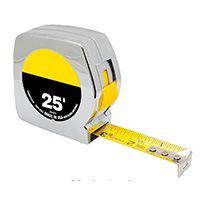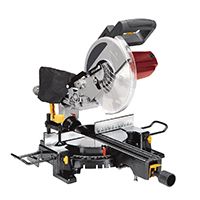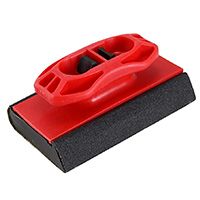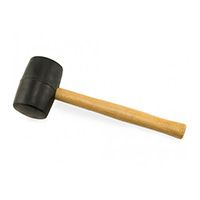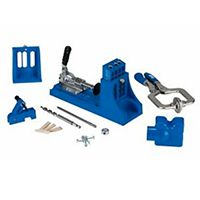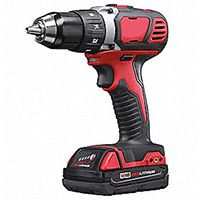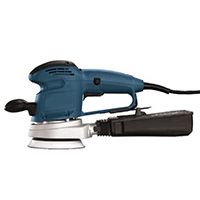Project details
Skill
Cost
Estimated Time
We may be compensated if you purchase through links on our website. Our team is committed to delivering honest, objective, and independent reviews on home products and services.
A shoe rack bench can be a game-changer for your entryway, providing storage and seating in one stylish piece. An experienced DIYer can probably build one in around five hours, including prep, assembling, and finishing touches. In the video above, This Old House general contractor Tom Silva explains how to build a sturdy, Craftsman-inspired shoe rack bench using clear, vertical-grain Douglas fir boards.
Materials and Tools for Building a Shoe Rack Bench
Consistency is crucial when cutting and shaping the many pieces that go into this rack. Silva achieved that using a miter saw and a table saw. For lumber, he used fir porch decking, which can be found at home centers.
To assemble the shoe rack, Silva used a combination of wood glue and pocket hole screws using a K4 jig manufactured by Kreg. For the finish, he applied a combination of Clear Satin and High Gloss Water-Based Interior Polyurethane Spray Paint, manufactured by Varathane.
Altogether, this shoe rack uses approximately $150 in materials. Here’s what you’ll need.
Materials
- 1-by-4-inch clear, vertical-grain Douglas fir boards (32 linear feet)
- 2-by-2-inch clear, vertical-grain Douglas fir (6 linear feet)
- Wood glue
- Pocket screws
- Sanding disks (80-, 100-, 120-, 150-, 220-, and 320-grit)
- Tack cloth
- Spray-on high gloss urethane
- Spray-on satin urethane
Tools
- Tape measure
- Miter saw
- Table saw
- Sanding block
- 24-inch bar clamp
- Mallet
- Pocket hole jig
- Drill driver
- Two No. 2 square-drive bits (1 and 6 inches long)
- Random-orbit sander
Shoe Rack Bench Project Preparation
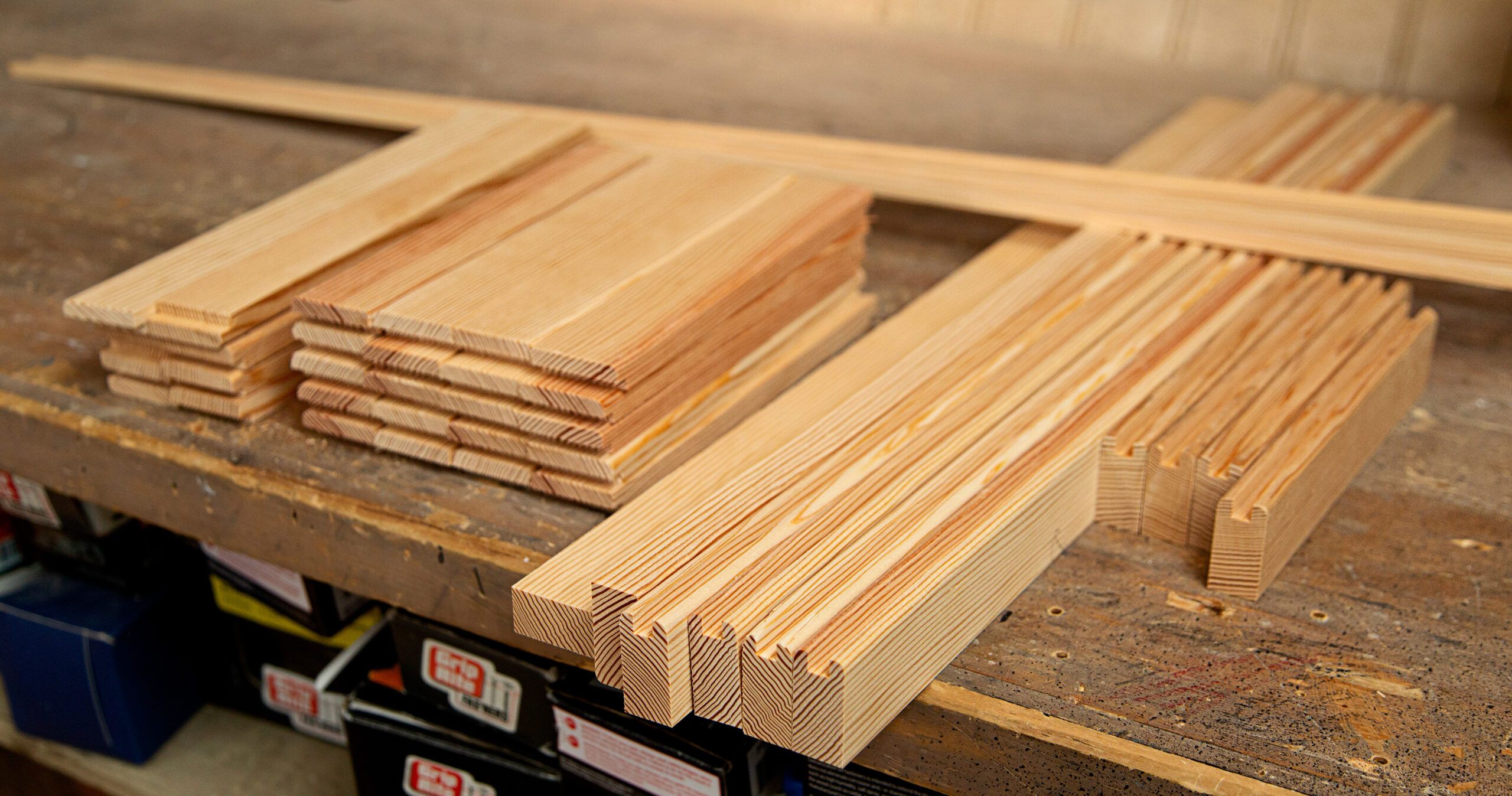
Tom used a table saw to mill 1-by-4 Douglas fir boards into the dadoed rails, rabbeted slats, and 1/4-inch strips needed to assemble this project.
Overview and Cut List for DIY Shoe Rack Bench
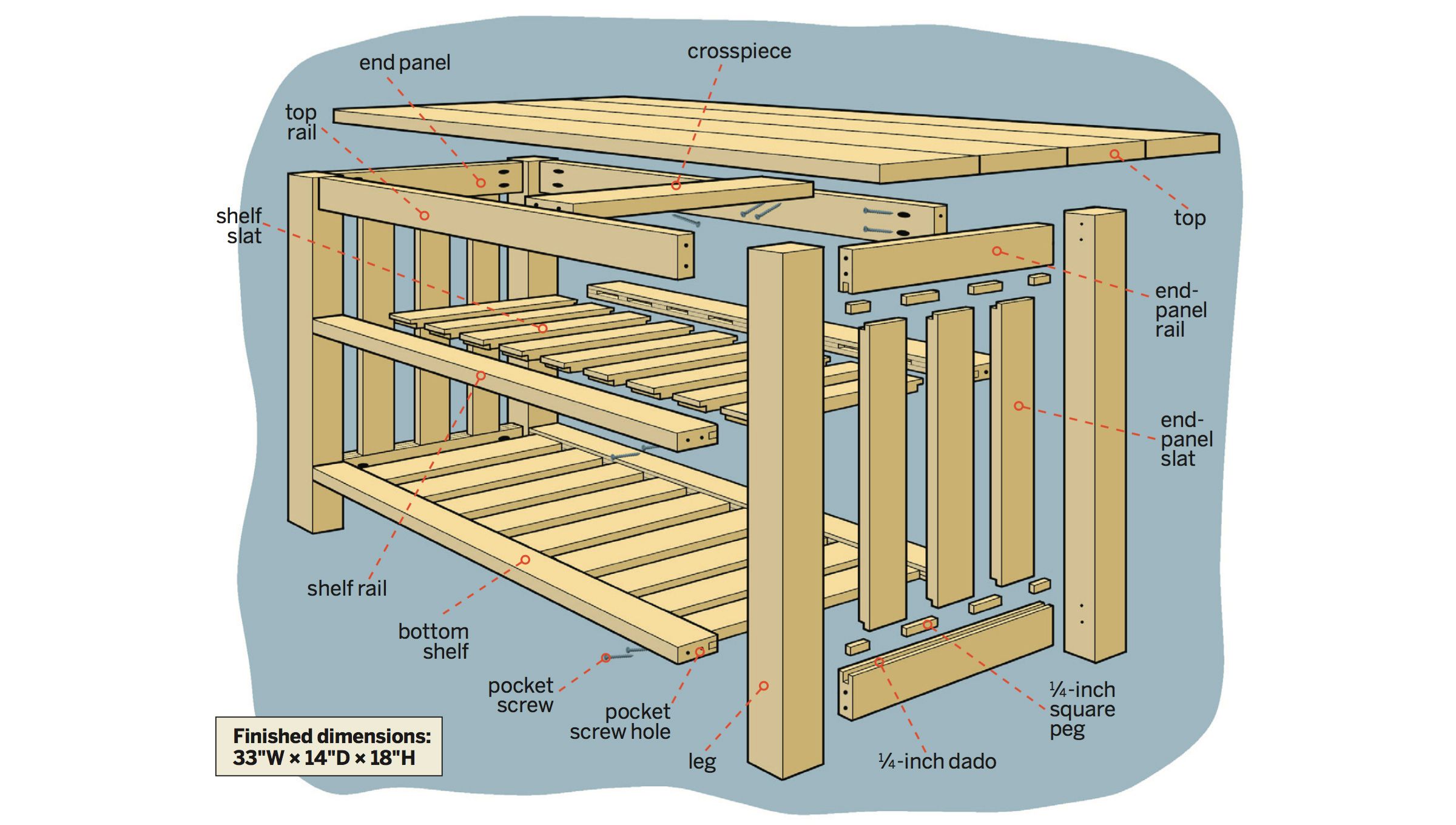
- Legs: 2-by-2s, four at 17 1/4 i nches
- End-panel slats: six at 1/2-by-1 3/4-by-12 1/4 i nches
- End-panel rails: four at 3/4-by-1 3/4-by-10 1/2 inches
- Shelf slats: 18 at 1/2-by-1 3/4-by-10 1/2 inches
- Top rails and shelf rails: six at 3/4-by-1 3/4-by-28 inches
- Top: 1x4s, four at 18 inches
- Pegs: 76 at 1/4-by-1/4-by-1 inch
Steps To Build a DIY Shoe Rack
Follow along with Silva as he assembles the piece.
1. Cut Pieces to Length and Width
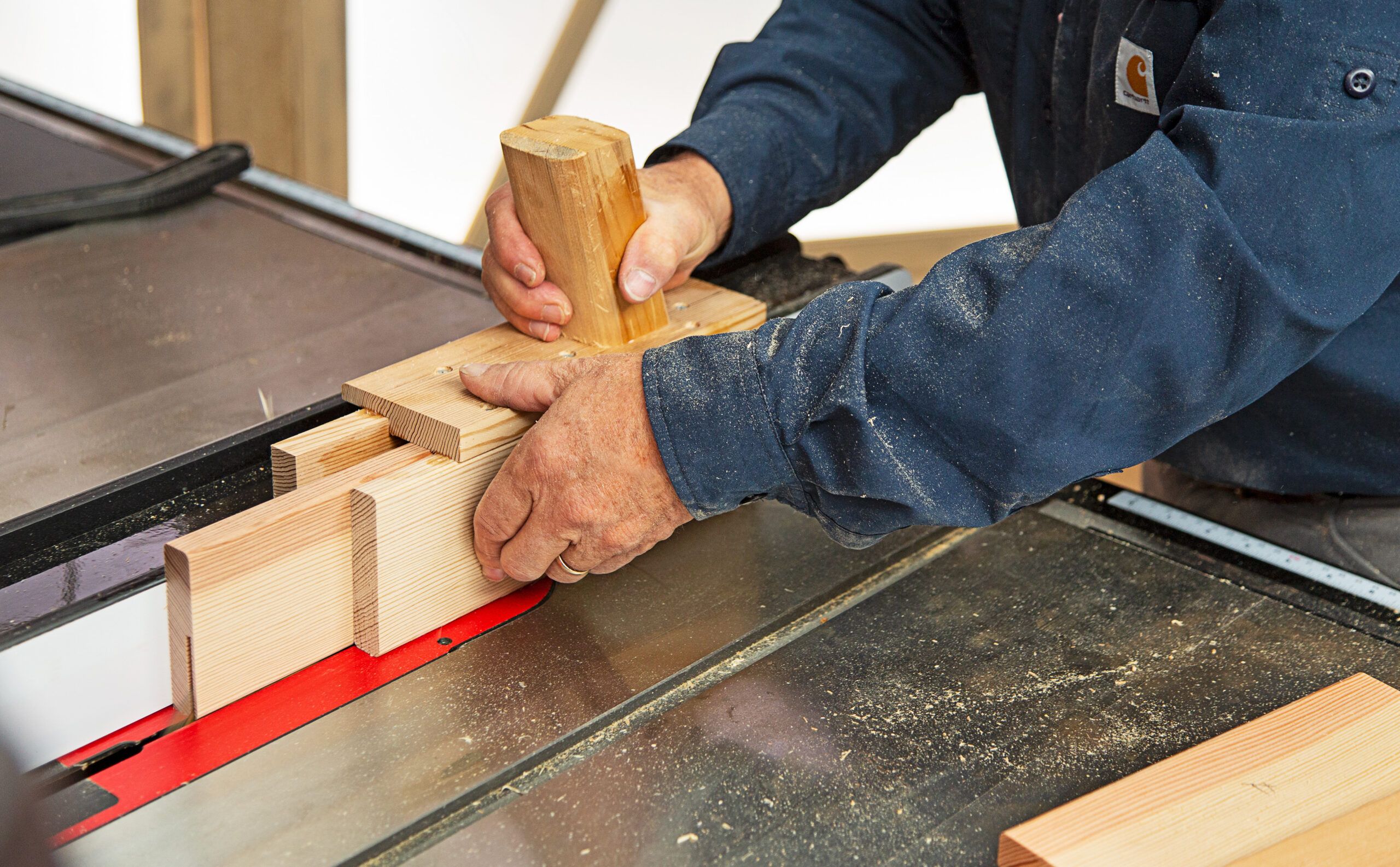
Using a miter saw, trim the stock to the lengths in the cut list. On a table saw, rip the slats to a 1/2 inch thick, as shown. Here, a jig keeps Silva’s fingers safe. Use that saw to also cut 1/4-inch-thick rabbets in the slat ends, 1/4-inch-wide dadoes in the rail edges, and rip the rails in half. Lightly sand all the cut edges.
2. Glue the Pegs to the Dadoes
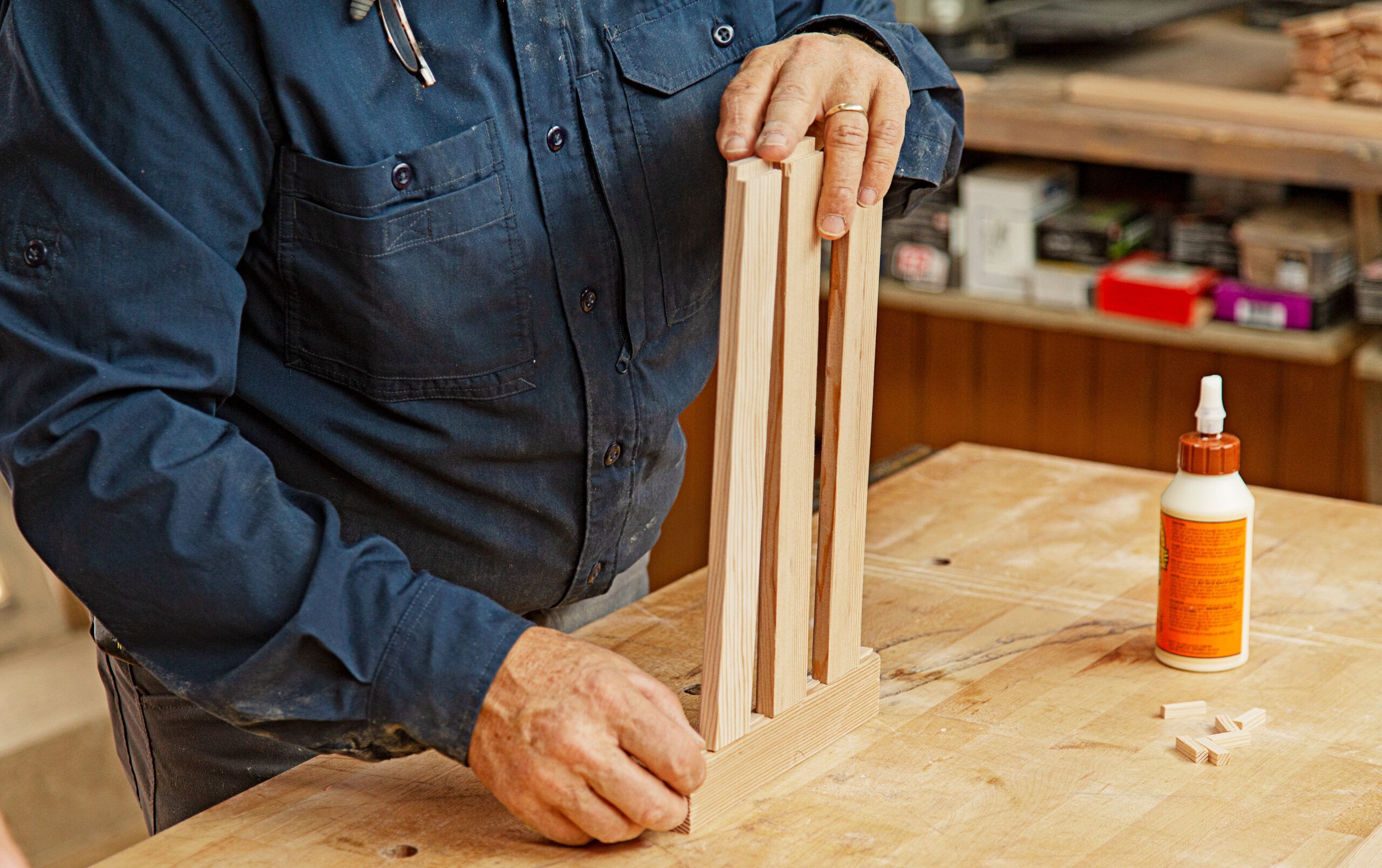
The slat ends fit into mortise-like slots in the rails of the end panels and shelves. To make those slots, glue 1/4 -inch-square pegs (shown at right in the photo above) into the dado using the slats to set the spacing. Gently remove the slats, and when the glue sets, sand the pegs flush with the tops of their dadoes.
3. Glue the Slats and Rails
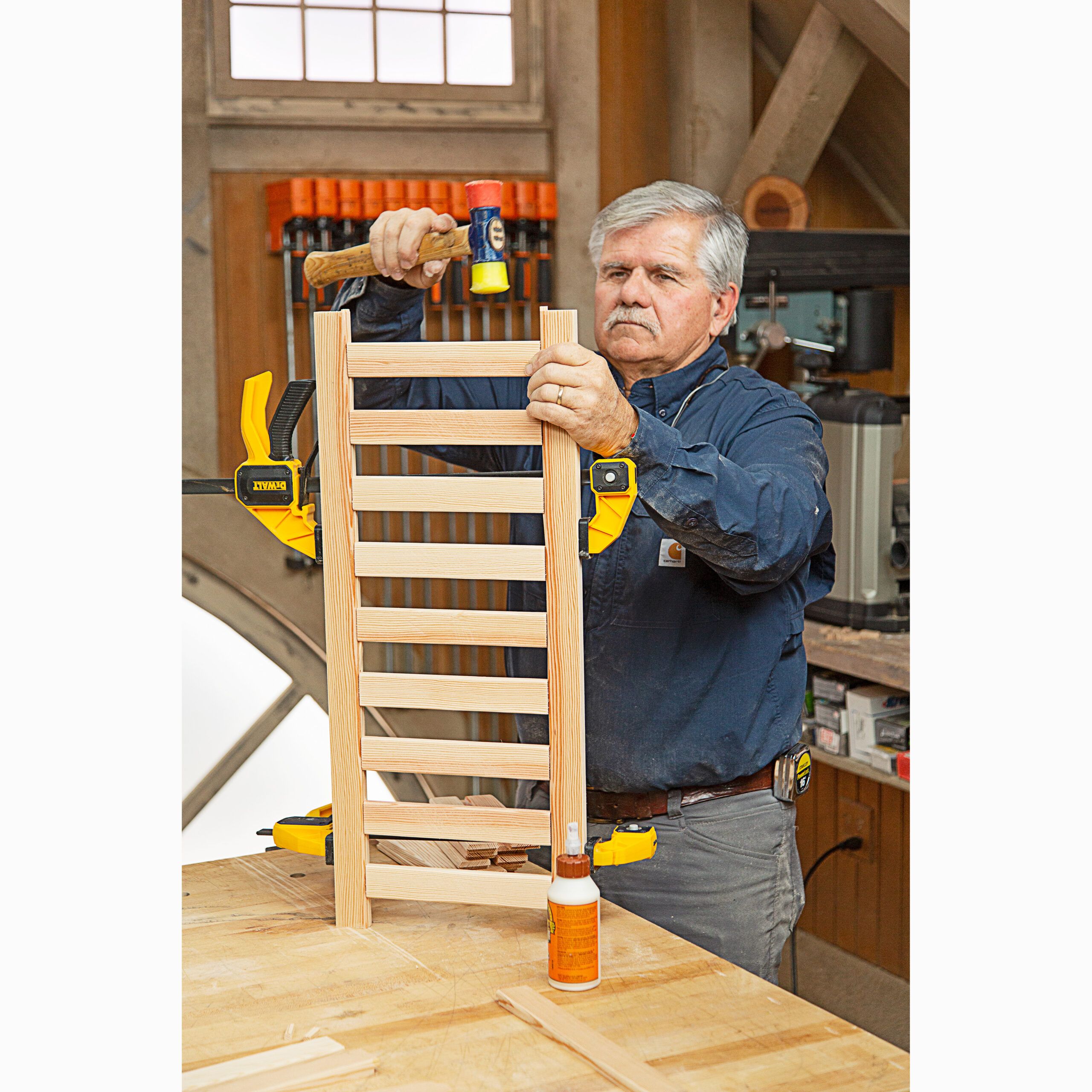
There will now be four pairs of rails with slots—one pair for each end panel and one pair for each shelf. Glue the rabbeted ends of the slats into the slots on one rail, then the other. Clamp together each slat-and-rail assembly and check that it’s square. A tap with a mallet can square up a racked assembly.
4. Drill Holes for Pocket Screws
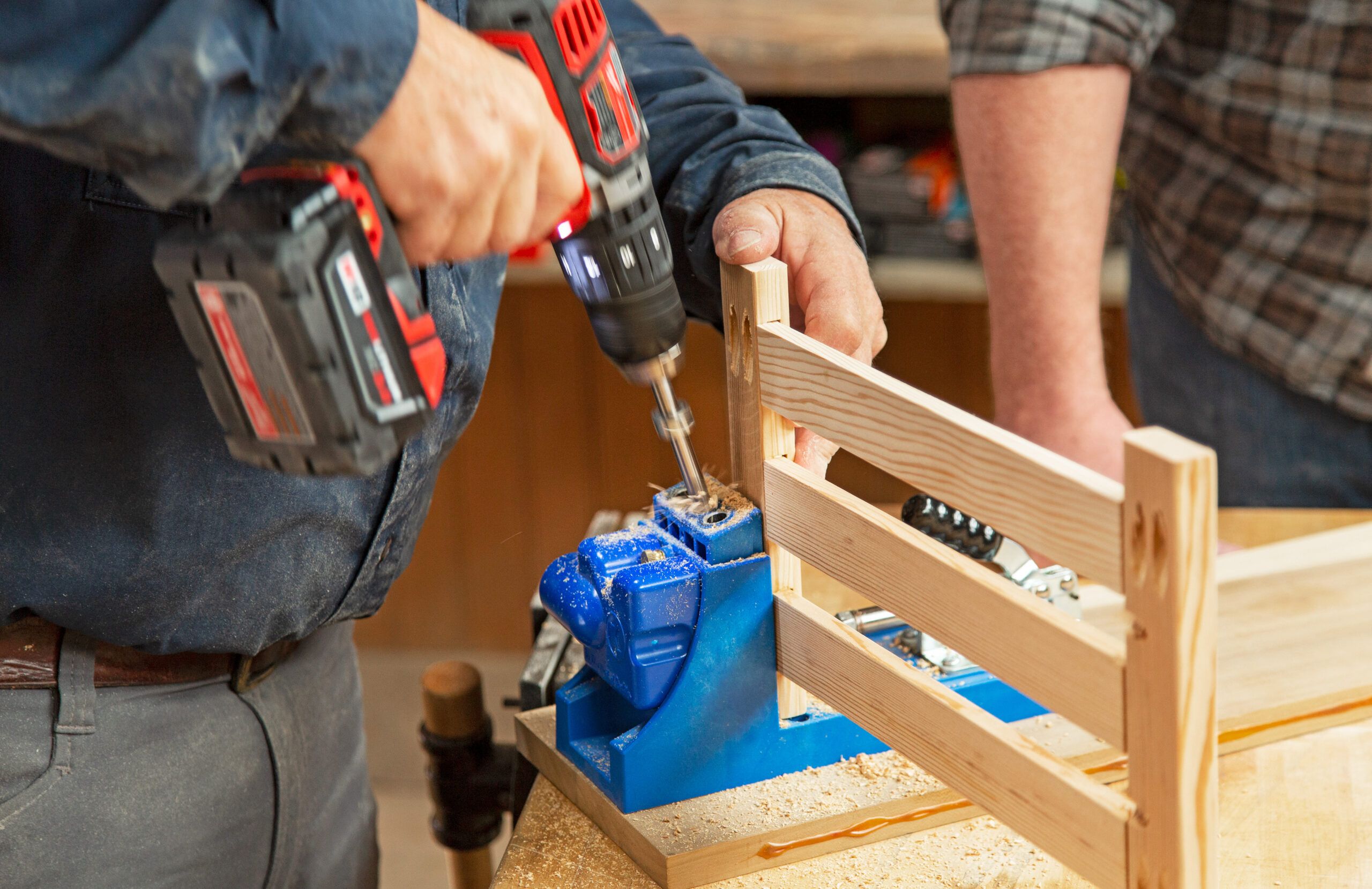
Clamp an end-panel rail into a pocket-screw jig and drill two holes through the inside face of the rail’s end. Do the same for the rest of the panel rails and the undersides of the shelf rails and crosspiece. Drill three evenly spaced cross-grain holes in the top rails and two in the end panels’ top rails.
Tip: Pocket screws offer a quick way to make strong no-glue joints where wood pieces meet at right angles. The screws fit into pilot holes drilled at a shallow, 15-degree angle by a special stepped bit guided by the jig shown (Kreg Tools).
5. Add the Legs to the End Panels
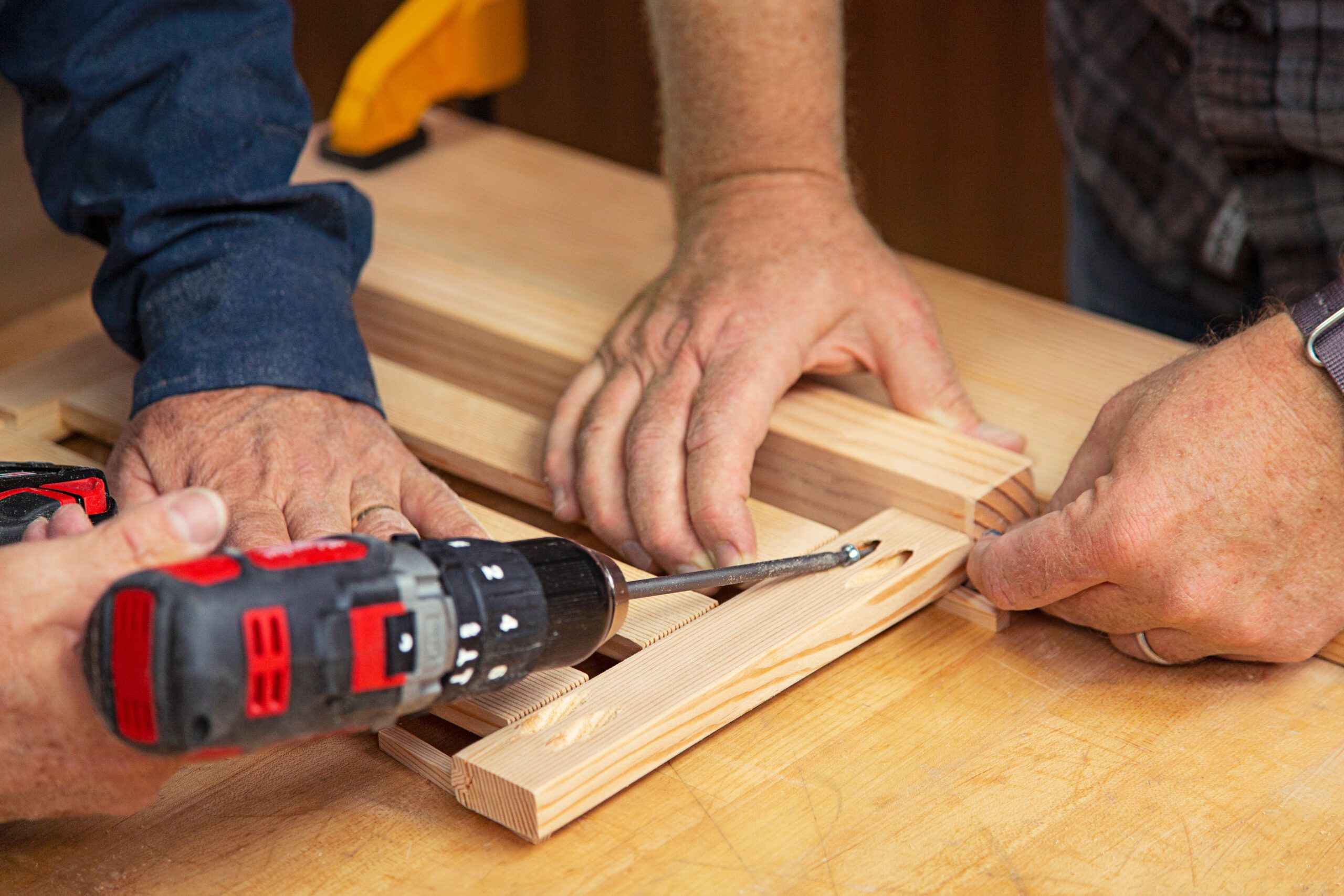
Set one end panel on 1/2-inch-thick scraps, inside face up. Position a leg against the panel’s top rail, then, using a drill/driver with a 6-inch-long bit, fasten the panel to the leg with two pocket screws, as shown. Do the same with the opposite leg. Attach the other panel to its pair of legs the same way.
6. Attach the Rails and Shelves
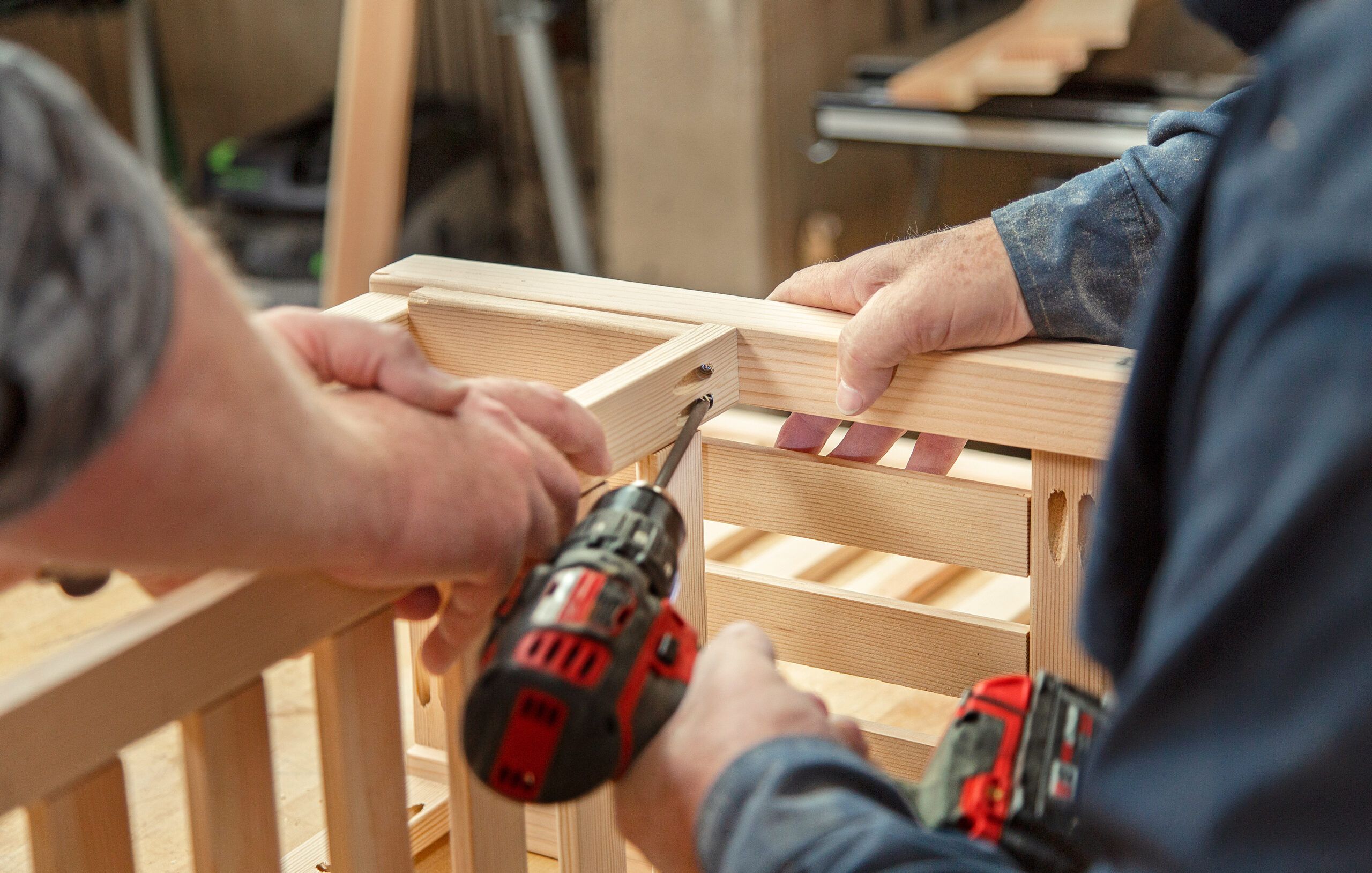
Screw the top rails to the end-panel legs. Keep the rails flush with the legs’ tops. Inset them half an inch from the legs’ outside faces. Fasten the crosspiece between the rails. Pocket-screw the shelves to the legs. Use a 6-inch guide block to set the spacing between the shelves and below the top rails.
Tip: Washer heads on these screws seat against a “step” made inside the hole by the drill bit. The step ensures the joint will be tight without splitting the wood or blowing through the piece being joined. Pocket screws are case-hardened to resist breaking and take square-drive bits, which don’t slip.
7. Secure the Top
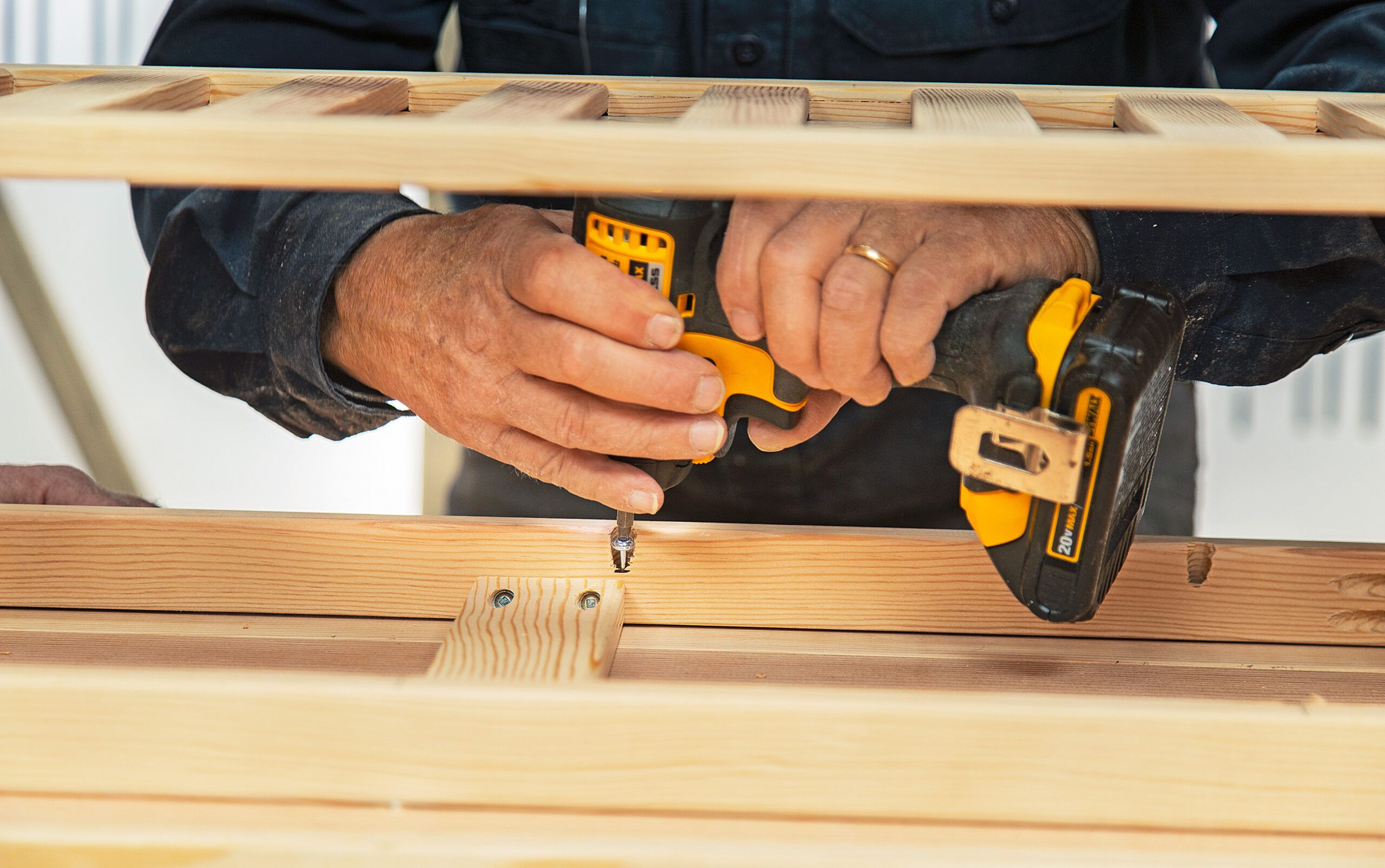
Lay four 1-by-4s edge to edge on your work surface. Center the rack’s base upside down on them, with the legs 1 inch from their ends and edges. Check that the base is square, then use the 1-inch bit to pocket-screw the crosspiece and the top rails, as shown.
8. Sand the Top
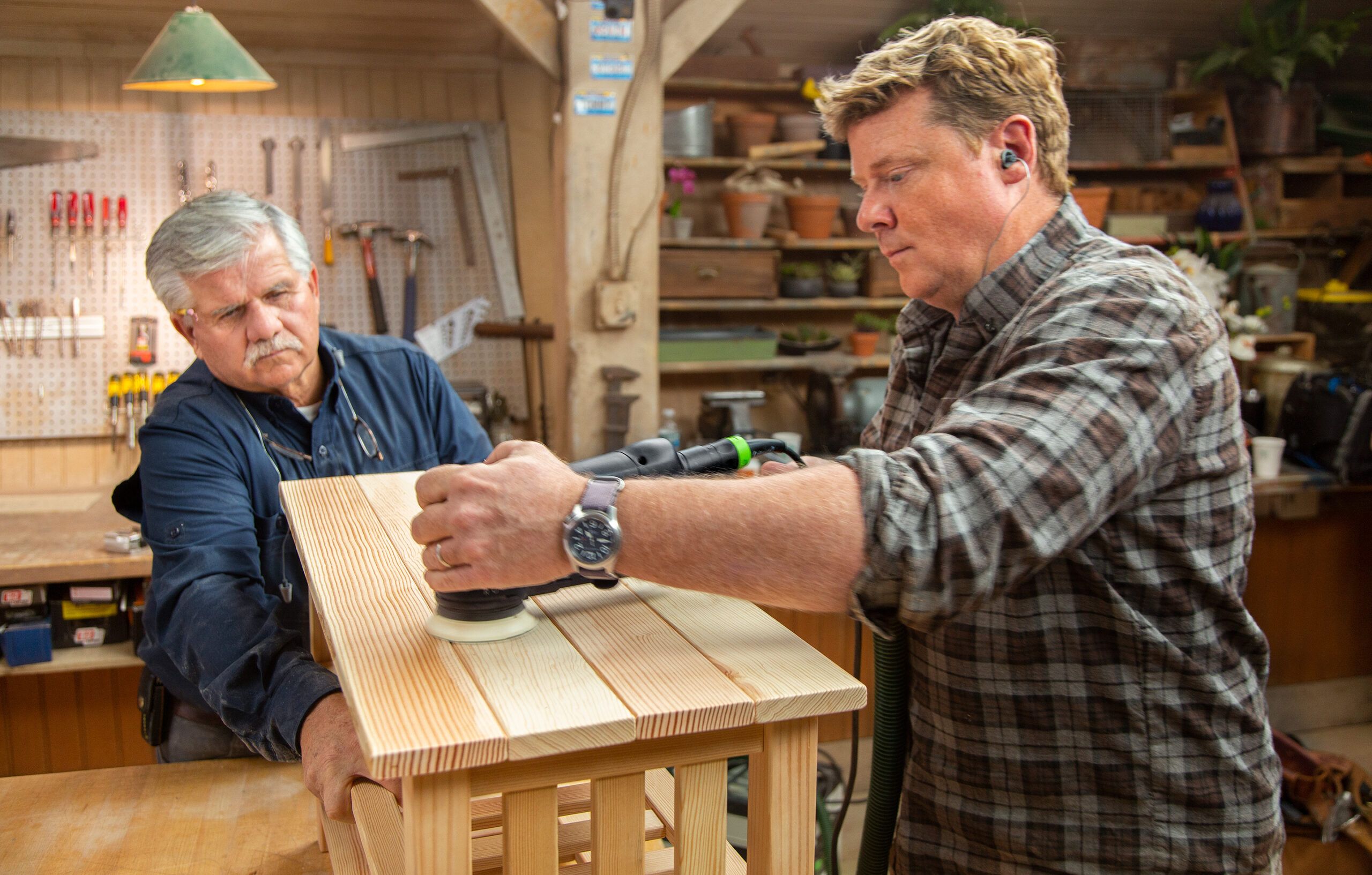
Starting with an 80-grit sanding disk, sand the entire top: face, ends, and edges. Continue with successively finer grits—100, 120, 150, 220, then 320—to prepare the top for a clear finish. If you plan to paint the bench, stop sanding after 220-grit.
9. Protect With Poly

Dust off every surface, then go over them again with a tack cloth. Because Silva was working indoors, he opted for a water-based polyurethane, and because the bench has so many exposed surfaces, he chose to spray on the finish for a total of three coats.
Advanced Techniques and Tips for Your Shoe Rack Bench
If you want to take your project a step further, consider the following techniques and tips:
- Enhanced stability: To ensure maximum stability and longevity, reinforce the joints with additional wood glue, even when using pocket screws. This can provide added strength, especially if the bench will be heavily used.
- Decorative touches: Decorative elements such as routered edges, carved details, or inlays can add unique character to your piece. Remember to sand any added elements thoroughly to maintain a smooth finish.
- Alternative woods: While Douglas fir is a great choice for its stability and appearance, other hardwoods such as oak or maple can be used to match your home’s interior decor. Keep in mind that hardwoods might require different finishing techniques to achieve the desired look.
- Storage solutions: If additional storage is a priority, consider adding drawers or baskets under the seat. Using the space beneath can transform your bench into a more versatile storage unit, perfect for small entryways.
Maintaining Your Shoe Rack Bench
Once your shoe rack bench is complete, keep it working and looking its best with these care guidelines:
- Regular cleaning: Dust the bench weekly and clean spills promptly to avoid stains. Use a damp cloth for cleaning and avoid harsh chemicals that can damage the finish.
- Periodic resanding: Over time, wear and tear might dull the surface of your bench. Lightly resand with fine-grit sandpaper and reapply a coat of polyurethane to restore the original shine.
- Inspecting joints: Regularly check the joints for any signs of loosening. Tighten screws if necessary and apply glue to reinforce weak spots. Ensuring the bench remains sturdy will extend its lifespan.
- Avoiding direct sunlight: Place the bench away from direct sunlight to prevent fading and drying out. Extreme temperatures can also cause the wood to crack.
